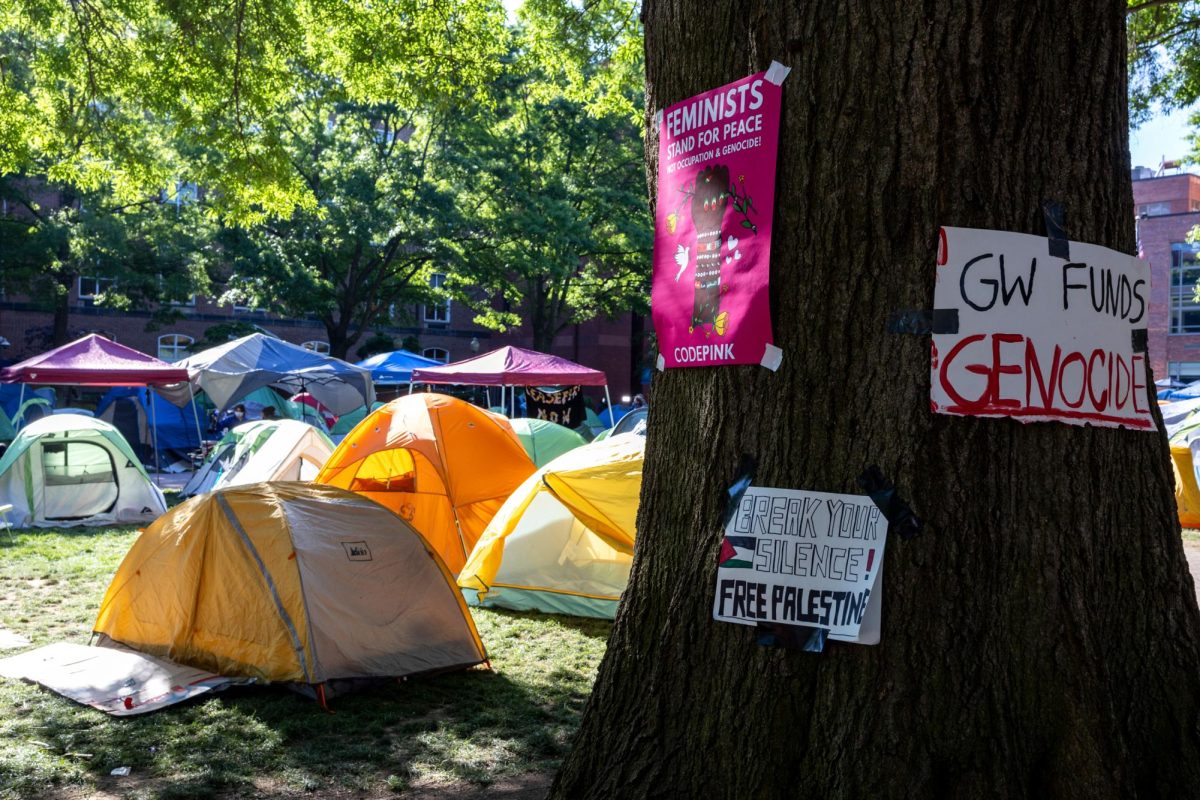GW is assessing its options following last week’s Board of Zoning Adjustment decision to cap undergraduate enrollment at 7,380 until the University houses 70 percent of full-time undergraduates on campus.
The restrictions are part of the BZA’s conditional approval of GW’s campus plan for the next eight years, which prevents the University from constructing buildings without beds for students until the 70 percent requirement is met.
The plan outlines campus boundaries and land usage and does not include the Hall on Virginia Avenue or Aston Hall as on-campus housing.
University Senior Counsel Charles Barber said the University’s main concern is the freeze on undergraduate enrollment, coupled with the restrictions hampering construction of non-housing buildings.
“Most (of the other conditions) we could live with,” Barber said. “We feel (the enrollment and construction restraints) could have a significant detrimental impact.”
Barber said the enrollment cap could become a serious issue for the University, as GW is trying to estimate the retention rate and acceptance numbers for next year’s incoming freshman class. GW plans to enroll 7,880 students next year, according to information distributed at the last board of trustees meeting, 500 students more than allowed by the BZA restrictions.
The University’s course of action is completely subject to the wording of the final written order, Barber said.
Both Barber and Ellen McCarthy, deputy director for development review for the D.C. Office of Planning, said there is no set date when the BZA will release its formal decision. Georgetown University passed its campus plan for the next 10 years in November, but the BZA has yet to release a final written order.
“Once the order is issued, the clock starts ticking,” he said. “We’re as much in the dark as anybody.”
Once the BZA issues its formal written decision on GW’s plan, the University has 10 days to petition the board to reconsider the decision, McCarthy said.
If the BZA does not reconsider, GW can appeal directly to the D.C. Court of Appeals within 30 days.
The BZA’s decision and restrictions remain in effect during an appeal process, McCarthy said, unless the University files for a temporary restraining order or a stay of injunctive relief to prevent the requirements from affecting GW.
“The University is going to ask for some sort of relief,” McCarthy said.
The University may not be able to prove the BZA restrictions would cause immediate irreparable harm, something necessary for the courts to order an injunction, McCarthy said.
Members of the local Advisory Neighborhood Commission have opposed GW’s plan since it was drafted last spring and said the BZA’s decision is a victory for the neighborhood.
“A moratorium on construction in Foggy Bottom is the only thing that will save the city,” said Advisory Neighborhood Commission Vice Chair Dorothy Miller at an ANC meeting Wednesday night.







